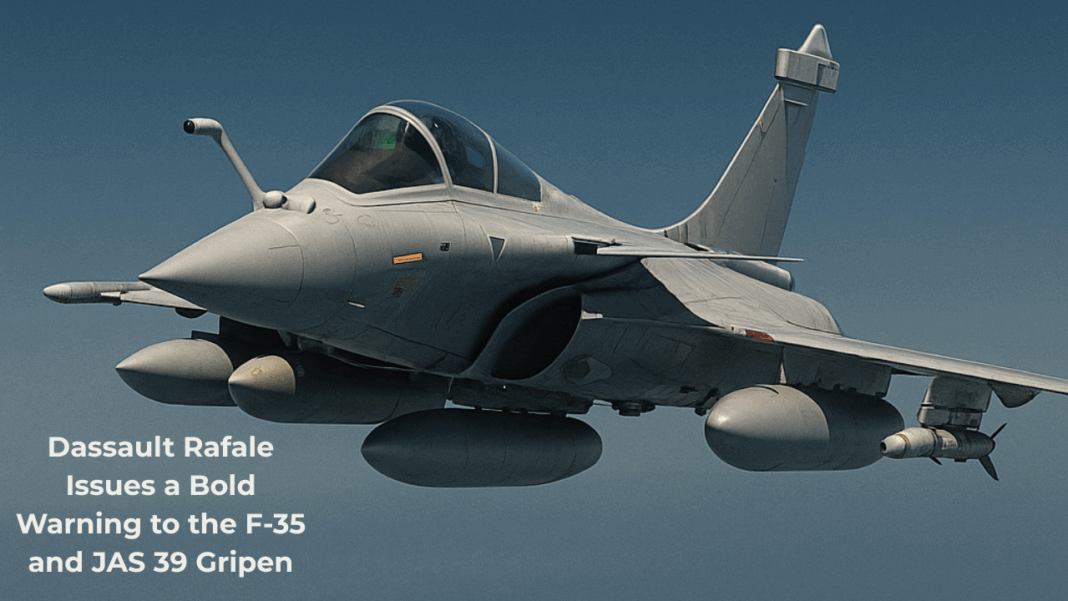The Dassault Rafale fighter jet, made in France, had a tough beginning. When the first version of the aircraft was shown more than 35 years ago, the program faced many problems.
Rafale’s Long Journey from Struggle to Success
One big issue was with its engine. The French company that was making the M-88 engine couldn’t get it ready on time. Because of this delay, early Rafale test flights had to use two American-made GE F404 engines, which are also used in older US Navy jets.
The Rafale did not fly regularly with its intended French engine until 1991. The application ran more slowly than anticipated as a result of this delay. Over time, however, Dassault worked hard to improve the aircraft. Today, the Rafale has become one of the most advanced multirole fighter jets in the world. The latest version, called the Rafale F5, is stronger, faster, and packed with new technology. It includes a powerful radar, better communication systems, and a new high-speed nuclear missile.
The Rafale F5 is also designed to work with unmanned combat air vehicles, which are like flying robots. These support aircraft help the main fighter jet in battle and are limited to weighing around 10 metric tons. The Rafale will remain in service in France until at least 2040.
Belgium Breaks Ranks — F-35s Fly to Italy, Not Texas
Rafale’s Tough Time in Europe
Even though Dassault is a European company, it had a hard time selling its aircraft in Europe. Looking at past fighter jets made by the company—like the Mirage III, Mirage V, Mirage F1, and Mirage 2000—only a few European countries bought them. Among the few were Greece, Belgium, Switzerland, and Spain. For many years, most European countries chose American-made aircraft instead.
This trend continued with the F-35 fighter jet from the United States. Fifteen of the twenty-one European nations that have fighter aircraft have chosen the F-35. Even Greece, which had already bought the Mirage 2000 and the Rafale, has now ordered 20 F-35s. This made it seem like no more Rafales would be sold in Europe.
Many believed that Rafale sales would mostly happen in Asia or Latin America. These were regions where either the F-35 was too expensive or the US was not willing to sell it. For instance, Indonesia placed an order for 42 Rafales in 2022, while India purchased 36 in 2016.
Despite these challenges, Dassault never gave up. The company continued to promote Rafale across the world. Its strategy was to stay in the market and not leave until a deal was made. This persistent approach slowly started to show results.
F-16 Super Squadron to Strengthen Osan Air Base with 62 Jets
Rafale Breaks the European Wall
For many years, it looked like Dassault’s Rafale would never get a real break in Europe. But everything started to change when Greece decided to buy 24 Rafales. At first, this was seen as a one-time event. But then Rafale began winning competitions.
In Croatia, Rafale was chosen over the Swedish Gripen and the American F-16V. Croatia ordered 12 Rafales, surprising many defense experts. Serbia also declared shortly after that it will purchase 12 Rafale aircraft. Then Greece came back with plans to order another squadron of 12 Rafales.
These new orders proved that Dassault’s fighter could indeed compete with the best. It showed that the idea of Rafale being “locked out” of Europe was no longer true. The aircraft had broken through the barrier that had kept French fighters out of the European market for decades.
There are reasons why some European countries have chosen the Rafale instead of the F-35 or the Gripen. One major reason is control. Countries that buy US-made jets like the F-35 often face restrictions. They might not be allowed to use certain weapons or fly certain missions unless the US agrees. With the Rafale, countries feel they have more freedom. Dassault offers them the ability to operate their aircraft without needing approval from another government.
Sweden Deploys Powerful JAS-39 Gripen Fighters to Shield NATO Borders Amid Rising Russian Threats
This sense of independence is important for many nations. It allows them to protect their own interests without outside interference. That feeling of freedom, combined with Dassault’s constant marketing, has helped Rafale make a strong comeback in Europe.
The Dassault Rafale fighter has proven that persistence pays off. It has pushed past its early technical issues, outlasted tough market conditions, and found success where it was least expected. With new orders from Croatia, Serbia, and Greece, the Rafale is now seen as a serious competitor—not just outside Europe, but within it as well.

